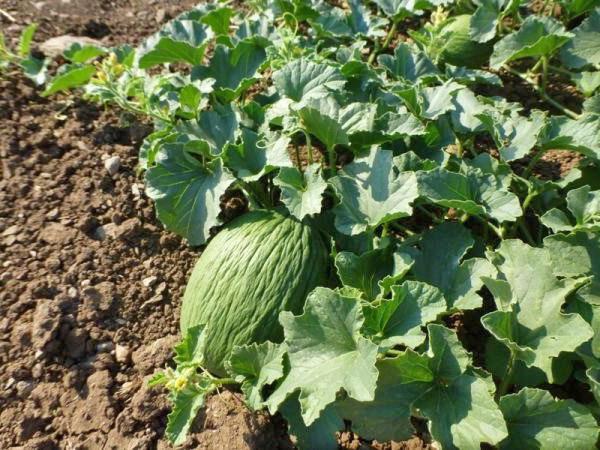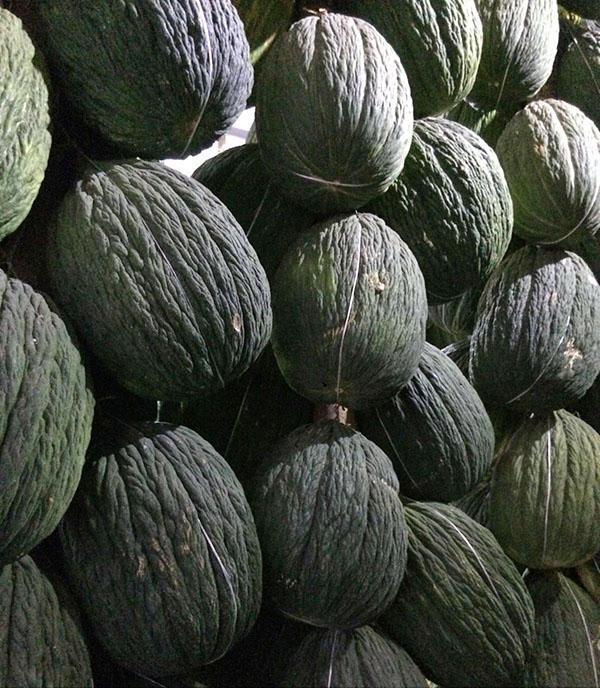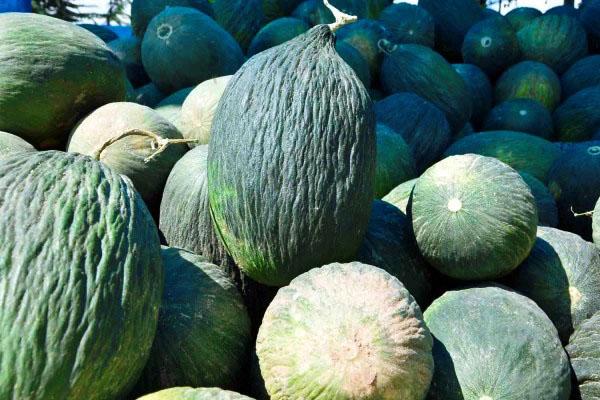Melon kassaba Assan-bey belongs to the late-ripening varieties
 Melon kassaba Assan-bey or Hassanbey belongs to the late-ripening, winter varieties. Fruits of this subtype ripen not on melons, but during storage. If a fresh, recently cut fruit is tried by a person little familiar with the features autumn-winter cash registers, he can easily become disappointed in the famous delicacy, without knowing its true taste.
Melon kassaba Assan-bey or Hassanbey belongs to the late-ripening, winter varieties. Fruits of this subtype ripen not on melons, but during storage. If a fresh, recently cut fruit is tried by a person little familiar with the features autumn-winter cash registers, he can easily become disappointed in the famous delicacy, without knowing its true taste.
Sweetness and unique juiciness to the melon comes 1-3 months after harvest, but you should not expect a honey aroma from this variety. Like all kassabs, Assan Bey, when unripe, smells like zucchini or cucumber, and when ripe has an almost imperceptible delicate aroma.
Descriptions of the Assan-Bey variety

Assan-bey melon fruits weigh from 3 to 6 kg, have a spherical or slightly elongated shape. A characteristic feature of the variety type is the mastoid protrusion at the petiole and the dark green, sometimes almost black, wrinkled surface of the fruit. On the dense skin of the melons, there is no pattern or hint of a net of cracks. In most cases, the color does not change even by the time of ripening.
If the melon cut from melon, the taste and consistency of the pulp rather resembles a dense, low-juiced marrow, then the ripe fruit is worthy of the attention of any connoisseur of melon crops. With a sugar content reaching 13%, Assan-Bey can compete with honey summer varieties.
The pulp of this type of melon is distinguished by the highest palatability, which makes it possible to classify it as a dessert variety. But you can use kassabs not only fresh. Back in the 19th century, they were used as raw materials for the production of dried melon, marmalade, candied fruit and jam.
The history of Assan Bay melons in Europe and Russia
 Winter kassabs from Turkey have been familiar to the inhabitants of Russia for a long time. Delivered by water to Rostov-on-Don, and then to Moscow, St. Petersburg and other large cities, fruits in the nineteenth century were in demand in the Russian Empire and were called "Smyrna melons" or "Southern beauties". The melons overcame the difficult road perfectly. Moreover, at the beginning of the 20th century, domestic melon-growing enthusiasts made successful attempts to cultivate Assan-bey kassab in Gagra. The plants bore fruit as sweet as those of their Turkish ancestors.
Winter kassabs from Turkey have been familiar to the inhabitants of Russia for a long time. Delivered by water to Rostov-on-Don, and then to Moscow, St. Petersburg and other large cities, fruits in the nineteenth century were in demand in the Russian Empire and were called "Smyrna melons" or "Southern beauties". The melons overcame the difficult road perfectly. Moreover, at the beginning of the 20th century, domestic melon-growing enthusiasts made successful attempts to cultivate Assan-bey kassab in Gagra. The plants bore fruit as sweet as those of their Turkish ancestors.
According to the notes left by travelers of those years, melons and gourds from Asia Minor were exported in large quantities to Marseille and other port cities. In the Old World, melons were grown only in greenhouses and were very rare. Therefore sweeter and more juicy than known in Europe cantaloupes, the fruits of the kassab melons were a real discovery. Based on these species, a new American melon variety has been developed, combining the aroma of cantaloupe, the sweetness and juiciness of cassab.